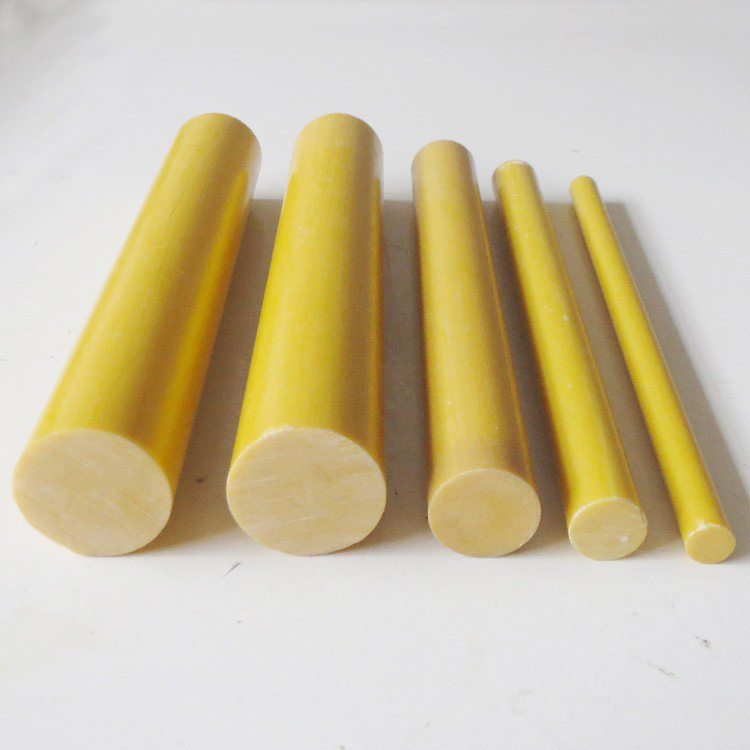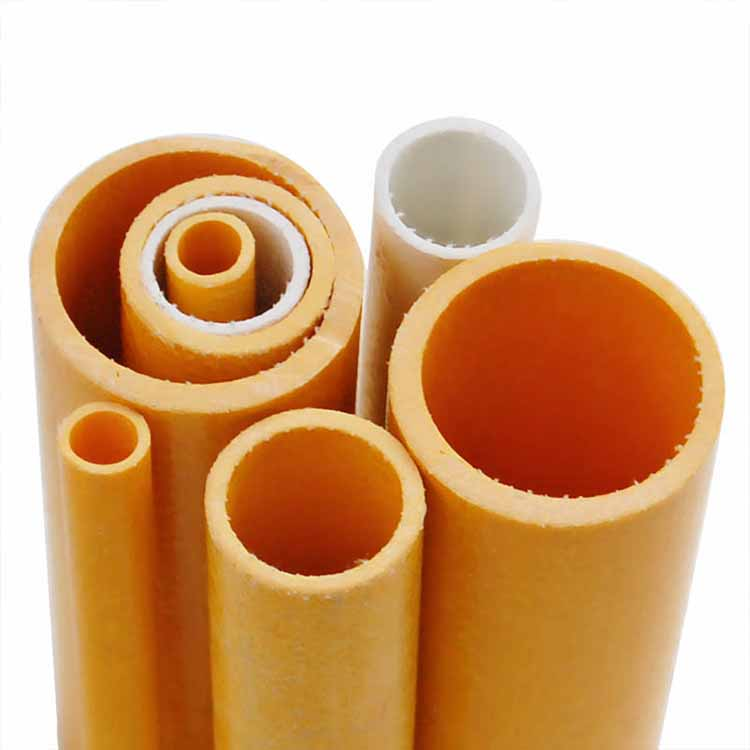The Pros and Cons of Solid vs. Hollow Fiberglass Rods: An Engineer's Guide
Fiberglass rods are a cornerstone of modern manufacturing, finding critical roles in everything from electrical insulation and structural composites to fishing rods and garden stakes. However, a crucial decision often arises at the design and procurement stage: should you choose a solid or a hollow fiberglass rod?
This isn't a question with a one-size-fits-all answer. The choice between solid and hollow designs represents a fundamental engineering trade-off, impacting the rod's strength, weight, cost, and functionality. Selecting the wrong type can lead to project failure, unnecessary expense, or a compromised final product.
This comprehensive guide will dissect the pros and cons of solid and hollow fiberglass rods, providing you with the analytical framework needed to make the perfect, informed choice.
The Core Principle: Stiffness and the Second Moment of Area
To understand the difference, we must first grasp a key engineering concept: the second moment of area (or area moment of inertia). This principle dictates a beam's resistance to bending.
In simple terms, material placed further away from the central axis of a beam contributes exponentially more to its stiffness. This is why an I-beam is so effective—it concentrates material at the top and bottom, far from the center.
A hollow fiberglass rod leverages this principle perfectly. By removing material from the center (which contributes little to stiffness) and redistributing it to a larger diameter, it achieves a much higher stiffness-to-weight ratio than a solid rod of the same weight.
Now, let's apply this theory to the practical world.
Hollow Fiberglass Rods: The High-Efficiency Choice
Hollow fiberglass rods, or tubes, are engineered for performance where weight and specific strength are paramount.

Pros of Hollow Fiberglass Rods:
1. Superior Stiffness-to-Weight Ratio: This is their single greatest advantage. For a given weight, a fiberglass hollow rod will be significantly stiffer and more resistant to bending than a solid rod. This makes them ideal for applications like long probes, antenna masts, telescopic poles, and lightweight structural frames where bending must be minimized without adding mass.
2. Lighter Weight: By nature of having less material, hollow rods are lighter. This is critical in applications like aerospace, portable equipment, and anything where reducing overall mass improves performance or ease of handling.
3. Material Efficiency: They use less raw material to achieve comparable or better stiffness than a solid rod. This can sometimes lead to cost savings on material, though this may be offset by more complex manufacturing.
4. Versatility for Internal Systems: The hollow core can be utilized for routing wires, cables, hydraulic lines, or even as a conduit for fluids. This is a functional advantage that solid rods cannot offer, keeping assemblies neat and protected.
Cons of Hollow Fiberglass Rods:
1. Higher Cost: The manufacturing process for pultruded hollow rods is generally more complex than for solid rods, often leading to a higher unit cost.
2. Lower Radial (Crushing) Strength: The thin walls of a hollow rod are more susceptible to denting, crushing, or buckling under concentrated radial or point loads.
3. Complex End-Fitting Attachment: Connecting fixtures, couplings, or plugs to the ends of a hollow rod requires special consideration to prevent the tube from splitting or collapsing when force is applied. This often necessitates specialized inserts or compression fittings.
4. Potential for Wall Thickness Variation: Inconsistent wall thickness during manufacturing can create weak points, making quality control paramount.
Ideal Applications for Hollow Rods:
•Long telescopic flagpoles and antenna masts
•Lightweight tent poles and structural frames
•Robotic arms and automation components
•UAV (Drone) arms and structures
•Any application where maximizing stiffness while minimizing weight is the primary goal.
Solid Fiberglass Rods: The Pillar of Strength and Simplicity
Solid fiberglass rods are the workhorses of the fiberglass world, prized for their brute strength and simplicity.

Pros of Solid Fiberglass Rods:
1. Excellent Compressive and Tensile Strength: A fiberglass solid rod can withstand high axial loads, both in compression (being pushed together) and tension (being pulled apart). This makes it behave like a reliable column or tie rod.
2. Superior Resistance to Crushing and Impact: The solid cross-section provides immense resistance to denting, crushing, and point impacts. It's a much more robust choice in harsh or abusive environments.
3. Simplicity and Lower Cost: The manufacturing process for solid rods is generally simpler and more cost-effective, making them a more budget-friendly option, especially in larger diameters.
4. Ease of Fabrication: End-fitting attachment is straightforward. Solid rods can be easily threaded, drilled, tapped, or bonded with standard fittings and adhesives without fear of collapse.
Cons of Solid Fiberglass Rods:
1. Poor Stiffness-to-Weight Ratio: This is their main drawback. For a given weight, a solid rod will be far more flexible (less stiff) than a hollow one. To achieve the same stiffness as a hollow rod, a fiberglass solid rod would need a much larger diameter and significantly more weight.
2. Heavy Weight: The solid fiberglass construction makes them heavy, which is a major disadvantage for portable applications or weight-sensitive designs.
3. Material Inefficiency for Bending Loads: As per the "second moment of area" principle, the material at the core of the rod is under-utilized when resisting bending, making it a less efficient use of material in such scenarios.
Ideal Applications for Solid Rods:
• Electrical grounding rods
• Sturdy stakes for landscaping and agriculture
• Push rods for mechanical linkages
• Non-conductive tools for live electrical work
• Structural supports in concrete or applications where high compressive strength is needed.
• Short spans where extreme stiffness is not required, and simplicity is key.
Head-to-Head Comparison Table
| Property | Hollow Fiberglass Rod | Solid Fiberglass Rod | Winner For... |
| Stiffness-to-Weight | Very High | Low | Long, lightweight spans (Hollow) |
| Tensile Strength | High | Very High | Tie rods, pulling (Solid) |
| Compressive Strength | Good (can buckle) | Excellent | Columns, pushing (Solid) |
| Radial/Crush Strength | Low | Excellent | High-impact environments (Solid) |
| Weight | Light | Heavy | Portability (Hollow) |
| Cost | Higher | Lower | Budget-conscious projects (Solid) |
| Ease of Assembly | More Complex | Simple | Quick fabrication (Solid) |
| Internal Routing | Yes | No | Running wires/conduits (Hollow) |
How to Make the Right Choice: Key Questions to Ask
To decide between solid and hollow, systematically answer these questions:
1. What is the Primary Load?
• Bending/Flexure? → Hollow is almost always superior.
• Compression/Axial Load? → Solid is often the safer, stronger choice.
• Torsion? → This is more complex, but larger diameters (often easier with hollow) generally resist twisting better.
2. How Critical is Weight?
• If saving grams or ounces is vital (aerospace, drones, portable gear), the choice is clearly Hollow.
3. What is the Operating Environment?
• Will the rod face impacts, crushing forces, or abrasive wear? The ruggedness of a Solid rod may be necessary.
4. Are There Integration or Routing Needs?
• Do you need to run anything through the center of the rod? If yes, the choice is made for you: Hollow.
5. What is Your Budget?
• For the most cost-effective solution, especially in smaller projects, Fiberglass solid rods often have the advantage.
Conclusion: A Matter of Engineering Priority
The debate between solid and hollow fiberglass rods is not about which is universally "better," but about which is optimal for your specific set of requirements.
• Choose the hollow fiberglass rod when your design priorities are maximum stiffness with minimum weight.
• Choose the solid fiberglass rod when your priorities are crushing strength, compressive load capacity, simplicity, and cost-effectiveness.
By understanding the inherent trade-offs, you can move beyond guesswork and make a strategic decision that ensures the success, efficiency, and durability of your project. In the world of engineering, the right material in the right form is the foundation of innovation.



